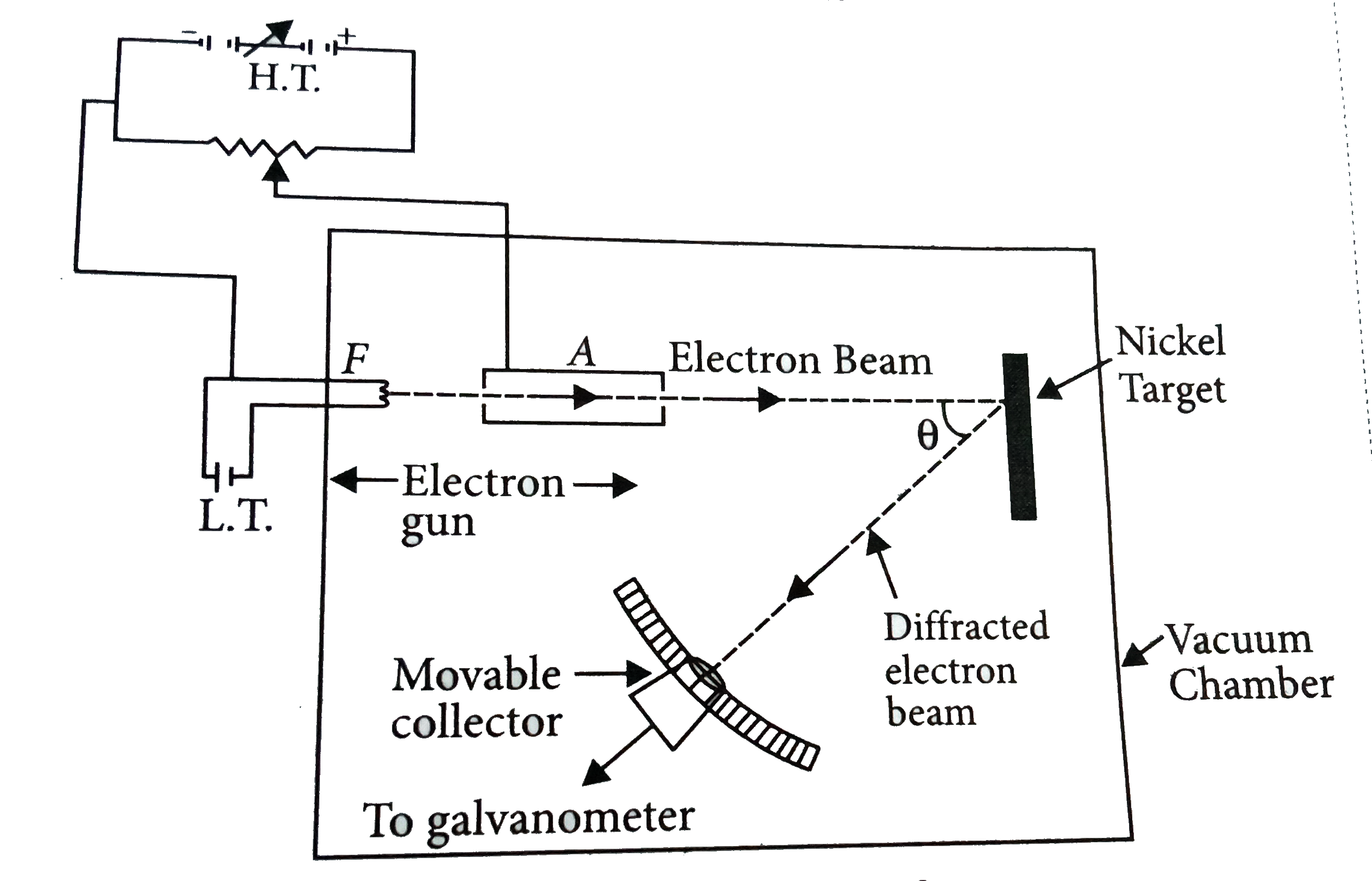Consider figure. Suppose the voltage applied to A is increased. The diffracted beam will have the maximum at a value of θ that

A
Will be larger than the earlier value
B
Will be the same as the earlier value
C
Will be less than the earlier value
D
Will depend on the target
Video Solution
Text Solution
The correct Answer is:C
In Davisson-Germer experiment, the de-Broglie wavelength associated with electron is
λ=12.27√VÅ ...(i)
where V is the applied voltage
If there is a maxima of the diffracted electrons at an angle θ , then
2dsinθ=λ ...(ii)
From Eq. (i) we note that if V is inversely proportional to the wavelength λ
i.e., V will increase with decrease in λ
From Eq. (ii), we note that wavelength λ is directly So, with decreases in λ,θ will also decrease
Thus, when the voltage applied to A is increased. The diffracted beam will have the maximum at a value of θ that will be less than the earlier value.
|
Similar Questions
Knowledge Check
Consider the fundamental physics for class XII. Suppose the voltage applied to A is increased. The diffracted beam will have the maximum at a value of θ that
Awill be larger then that earlier valueBwill be the same as the earlier valueCwill be less than the earlier valueDwill depend on the targetThe maximum value of cosθ+sinθ , if
Aθ=45∘Bθ=60∘Cθ=90∘Dθ=30∘Maximum value of (cosθ−sinθ) is :
A√2B1C12D1√2
Find the maximum and minimum values of 7cosθ+24sinθ
View SolutionIn Davisson-Germer electron diffraction arrangement if suppose the voltage applied to accelerated electrons is increased, the value of the angles at which diffracted beam have the maximum intensity
View SolutionThe Maximum value of asinθ+bcosθ is:
View SolutionThe maximum value of sin4θ+cos4θ is
View SolutionMaximum value of 24sinθ+7cosθ is
View Solution